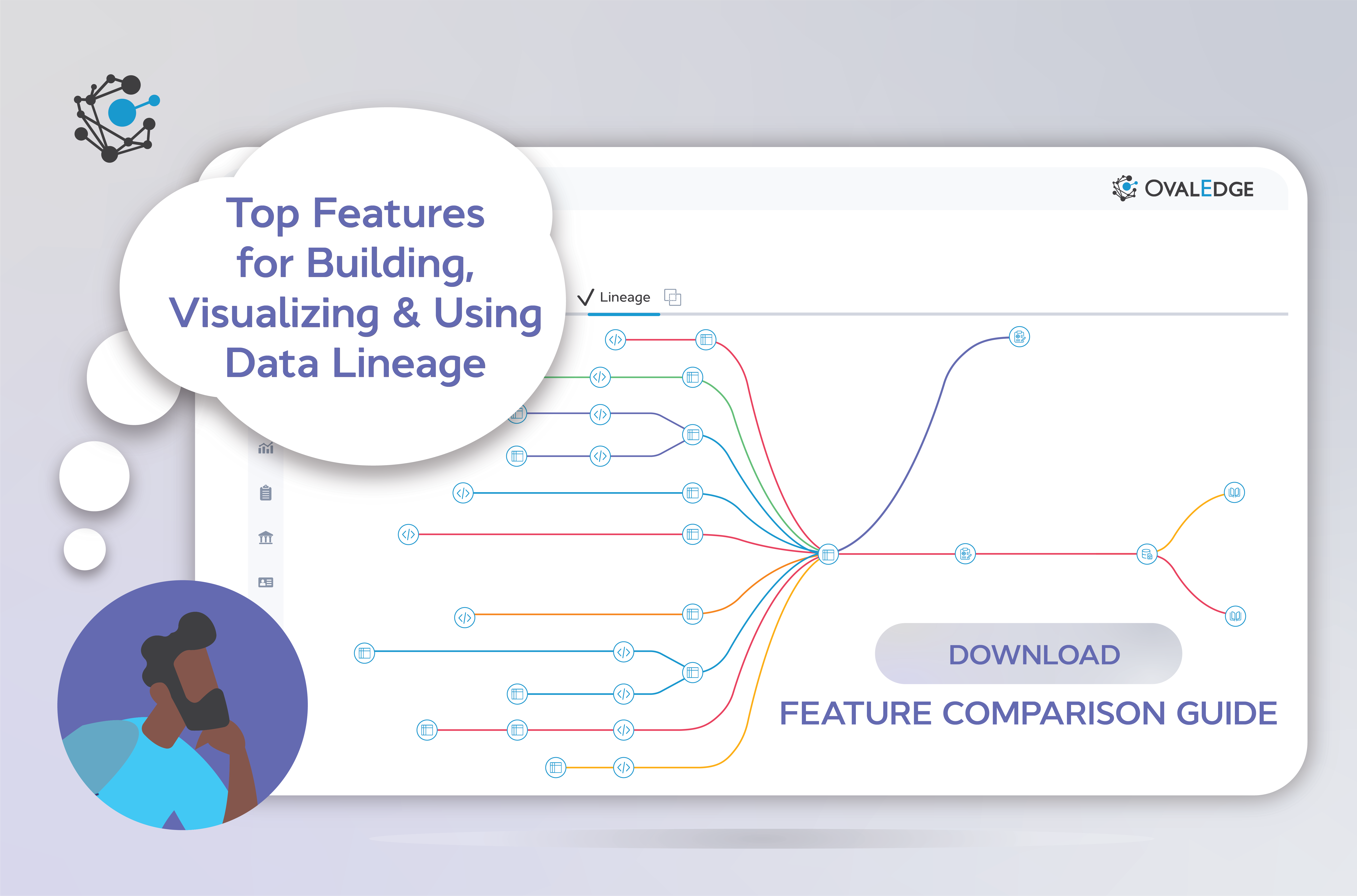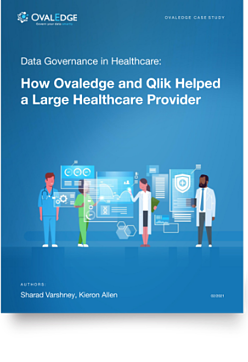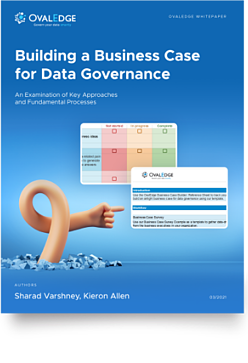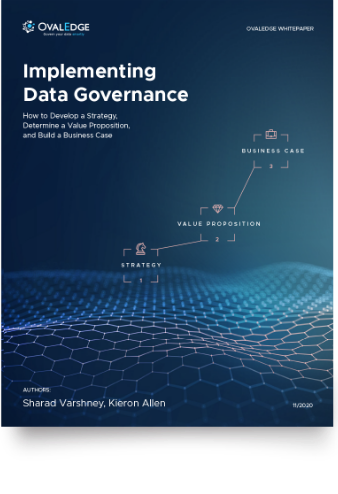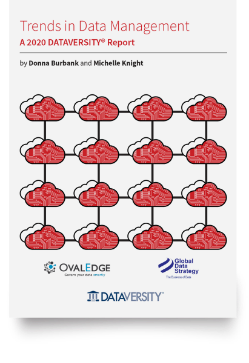Table of Contents
Top Features of a Data Lineage Tool in 2024
In the intricate landscape of data management, understanding the journey and relationships of your data is paramount. A data lineage tool serves as a guiding light, unraveling the complex web of data flow within an organization. This article delves into the top features that make a data lineage tool indispensable for enterprises seeking comprehensive insights into their data ecosystems.
Features in Building Data Lineage
Building data lineage involves identifying and mapping the entire journey of data, including its origins, intermediate processing steps, and endpoints. The purpose is to create a clear and comprehensive understanding of how data is acquired, manipulated, and utilized throughout its lifecycle.
Related Post: 5 Core Benefits of Data Lineage
1. Lineage Across Diverse Data Systems
A robust data lineage tool should transcend boundaries, supporting multiple levels of objects. The tool should provide a seamless view across diverse data entities, whether it is - files, tables, reports, APIs, applications, or streaming systems like Kafka. The ability to trace lineage at the column level adds granularity, offering a nuanced understanding of data relationships.
2. Algorithmic Automation
Building data lineage manually can be a daunting task. An advanced tool automates this process through algorithms. AI-based, code parsing and query log parsing are three pivotal approaches. While query log parsing is specific to data warehouses, code parsing is versatile, working across different platforms. The tool should intelligently detect and support multi-object lineage, traversing from files to tables to reports.
3. User-Friendly Interface
The ease of building the interface is crucial for user adoption. A graphical user interface (GUI) that requires minimal clicks enhances the user experience. This feature accelerates the learning curve for users, making the tool accessible to technical and non-technical stakeholders.
4. API Support
Integration with other products is facilitated through robust Application Programming Interfaces (APIs). For programmers and developers, the availability of APIs is paramount. It enables the construction of custom lineage solutions and enhances interoperability with other tools in the data ecosystem.
Features in Visualizing Data Lineage
It is the process of representing and presenting the flow and relationships of data within a system or organization in a visual format. Visualizing data lineage involves creating graphical representations, such as diagrams or charts, that illustrate the journey of data from its source to its destination, including all the intermediate steps and transformations it undergoes.
1. Object-to-Object Level Visualization
The ability to visualize data lineage from one object to another provides a clear understanding of data movement. This feature is essential for identifying dependencies and impact analysis.
2. Column-Level Visualization
Granular insights into data lineage at the column level are crucial for understanding the transformation and movement of specific data attributes.
3. System-Level Visualization
A comprehensive tool should focus on individual objects and provide a holistic view at the system level. This ensures that data engineers and analysts can understand how data flows through the entire ecosystem.
4. Tracing Capability
The tool should offer tracing capabilities, allowing users to trace data lineage backward and forward. This functionality aids in identifying the origin and destination of data, facilitating effective troubleshooting and analysis.
5. Expand and Collapse Functionality
Complex data lineages can be simplified with expand and collapse features. Users should be able to expand detailed views and collapse them for a high-level overview, enhancing usability.
Features in Using Data Lineage
Using data lineage refers to applying and utilizing data lineage information within an organization's data management and analytics processes.
1. Downstream and Upstream Object Discovery
The tool should empower users to effortlessly identify all downstream and upstream objects related to a particular data entity. This feature is invaluable for impact analysis and understanding the consequences of data changes.2. API Utilization
Leveraging APIs for communication is a game-changer. In scenarios where a source file is broken, the tool should enable automated communication with relevant stakeholders, including business owners, stewards, and custodians. This ensures efficient collaboration and timely issue resolution.
3. Analysis Execution via API
Beyond visualization, the tool should allow users to run analyses on the data lineage. This could involve data quality assessments, performance analyses, or any custom analysis defined by the organization.4. Audit-Friendliness
Robust audit trails are essential for compliance and governance. The tool should maintain detailed logs of changes, user interactions, and lineage modifications, ensuring transparency and accountability.
Related Post: Data Governance & Metadata Management: Better Together
5. Versatility Across Use Cases
A top-tier data lineage tool should be versatile, catering to a spectrum of use cases. The tool should be adaptable across diverse scenarios, from aiding data beginners in impact analysis to facilitating in-depth root cause analysis for data quality issues.
6. Workflow Integration
Integration with workflows enhances the tool's utility. For example, assigning a workflow to the report owner with data quality issues streamlines the root cause analysis process. Workflow integration ensures a seamless connection between data lineage insights and actionable steps for improvement.
Jumpstart your evaluation of data lineage tools with our Data Lineage Feature Comparison Guide. Compare features to find the perfect fit for your data management needs. Download now.
Conclusion
Investing in a data lineage tool is an investment in understanding and optimizing your data ecosystem. The features outlined here provide a comprehensive guide for organizations seeking a tool that goes beyond visualization, offering a powerful and adaptable solution for various data management challenges. As organizations navigate the ever-evolving landscape of data, a robust data lineage tool becomes an indispensable asset, unlocking the true potential of their data assets.
Book a call with us to find out:
|

